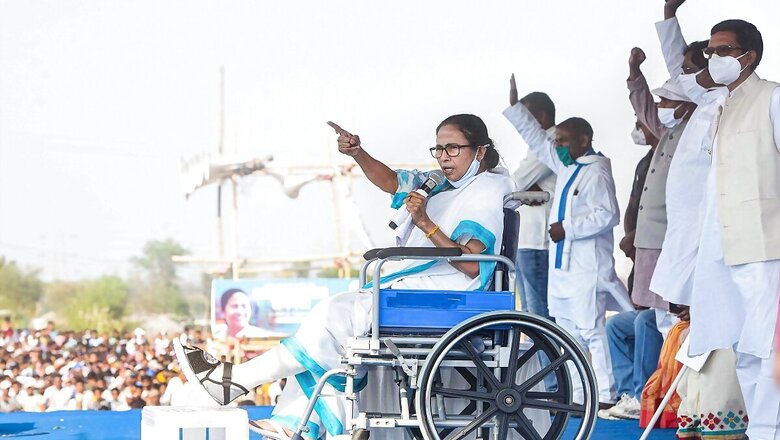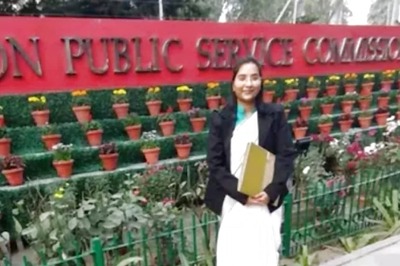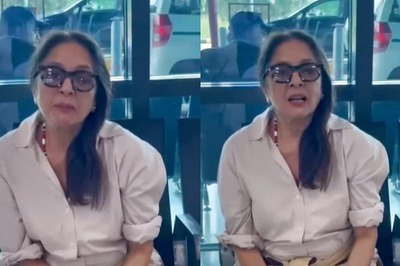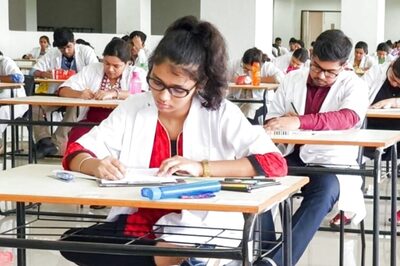
views
On May 2, the day results of the West Bengal assembly elections were declared, a brief message in Bengali surfaced on Facebook and WhatsApp. It literally went viral from the next day, as reports of political violence, unleashed mostly by workers of the Trinamool Congress (TMC), started pouring in. The message was simple: the TMC should not misread the electoral mandate.
“It seems the TMC leaders, supporters and workers of the TMC are getting a wrong message. This needs to be clarified. This time, the majority of the state’s people voted for you to drive out the Bargi invaders,” it read, drawing parallels between the BJP’s entry into the state and invasions of Bengal by Maratha cavalrymen (called Bargis) in mid-1700.
The message went on to add that Bengal’s vote in 2021 was not for the TMC but against the BJP’s brand of politics, asking chief minister Mamata Banerjee’s party if it understood the difference.
The TMC had just recorded the highest vote share the party ever secured since its birth in 1998. It bagged 48% of the polled votes, three percentage points higher than its 2016 assembly election vote share and nearly five percentage points more than its vote share in the 2019 Lok Sabha elections.
Raising the vote share by five percentage points in a matter of two years did the trick for the party, which returned to power in Bengal for a third consecutive term with a record mandate. The BJP, which led 121 of the state’s 294 assembly segments in 2019, managed to win just 77 seats.
The TMC stood jubilant and the BJP partly demoralised.
The tone of the viral message made it clear that it was coming from, and perhaps also shared by, mostly the people who were loyalists of neither of the four main political forces in the state — the TMC, the BJP, the Left and the Congress — and yet played a role behind the TMC’s victory by creating a polarisation against the BJP.
The write-up is, by all chances, a correct analysis. In this election, if the BJP had myriad socio-religious organisations belonging to the Rashtriya Swayamsevak Sangh (RSS) by its side, the TMC, too, got help from unexpected quarters. A number of small and electorally insignificant political parties and citizens’ initiatives carried out an intense campaign across the state, blasting the BJP for the Union government’s policies and for allegedly trying to destroy Bengali culture with its focus on consolidating the Hindu vote.
These platforms, as well as smaller Left parties outside the Left Front, carried out a campaign against the BJP, opposed the National Register of Citizens (NRC), and appealed to people to “save democracy”. Most of the people participating in these campaigns were not involved in regular electoral politics and preferred to call their campaign a “citizens’ initiative”. They included students, scholars, rights activists and cultural activists.
Many of these groups were an amalgamation of even smaller groups. Overall, a network of organisations who were not supporters of the TMC or the Left carried out a coordinated campaign across the state focused on one slogan: “No vote to BJP”.
In the historic 2011 assembly elections, a similar role of small political parties and organisations as well as individuals, not directly engaged in electoral politics, had contributed to the fall of the 34-year-old Left Front rule. That time, the amalgamation of such organisations and individuals had called for the toppling of the Left regime. In 2021, they called for resisting a change in favour of the BJP.
Individuals involved in these campaigns said it was evident from the results that while they were fearing a “polarisation engineered by the BJP and its associated organisations” to influence voters, the state actually witnessed a polarisation against the BJP. The TMC emerged as the beneficiary for being the BJP’s strongest opponent.
Kasturi Basu, a scholar and cultural activist who was part of one such group, said the organisation had spread to 19 of the state’s 23 districts, had nearly 1,000 volunteers, and campaigned mostly in rural areas, where the BJP’s rise was more visible.
“We printed nearly 6 lakh leaflets, pamphlets and folders centrally, while many organisers in the districts got these materials printed on their own. Our appeal was not to the loyalists of any parties but to those who vote for a party after considering certain facts. We urged them to consider the BJP’s misdeeds and vote for any party except them. Our main goal was to reduce the BJP’s vote share,” she said.
This author, while travelling different parts of the state to assess the electoral mood, saw the “No vote to BJP” campaign had reached remote villages in Birbhum in the southwestern part of Bengal, Alipurduars in the foothills of the Himalayas, and Sunderbans along the Bay of Bengal. They campaigned with posters and street-corner meetings and often on vehicles on the go.
There were many such as filmmaker Aniket Chattopadhyay who went to the polling booths after many many years this time because they said they had a “sense of urgency” to ensure the BJP failed to win Bengal elections.
Chattopadhyay, who was part of the same platform as Basu, however, said there was a difference between the role of the citizens’ initiatives in 2011 and 2021.
“In 2011, the civil society movement shared a platform with the TMC, worked under one single banner and called for her (Banerjee’s) victory. This time, there were several platforms acting separately, staying outside the realm of the TMC, criticised all parties and yet called for the defeat of the BJP as this was evidently the most dangerous force for the state,” Chattopadhyay said.
“Having taken a stand independent of the TMC, we retain our liberty to criticise the TMC whenever it betrays the people,” Chattopadhyay said.
Political activist Prasenjit Bose, who is one of the organisers of the platform “Joint Forum against NRC”, agreed with Basu and Chattopadhyay. He told this author that the incidents of political violence showed how the TMC was misreading the poll verdict. Bose believed the ruling party’s massive victory was a result of a consolidation of anti-BJP votes in the TMC’s favour and the work of many organisations and individuals beyond the TMC’s network.
“The party will make a grave mistake if they fail to read the mandate. They must immediately stop undemocratic excesses,” Bose said.
In the run-up to the election, CM Banerjee, too, had publicly thanked the “No vote to BJP” campaign, and praised the role of the CPI-ML (Liberation), a Left party outside the Left Front in West Bengal, in particular.
Possibly no one can, or should, try to downplay the popularity that Banerjee has. The party has steadily secured more than 40% vote share since coming to power in 2011. Even in the 2019 Lok Sabha elections, when the TMC faced a jolt by losing 12 seats from its 2014 tally of 34, its vote share stood at 43.3%. But an increase in that vote share by another five percentage points made this huge mandate in 2021 possible. If the BJP’s 2019 success was a result of anti-TMC consolidation, the 2021 verdict was anti-BJP polarisation in favour of the TMC.
It also appears that the BJP, too, misread the 2019 Lok Sabha election mandate in the state. This author, over the past couple of months, had met several persons who had opted for the BJP in the Lok Sabha elections but got upset with the party since then because of the aggressive verbal and body language of its state unit leaders, including Dilip Ghosh and Suvendu Adhikari. One of the pet slogans of the party’s state unit president, Ghosh, was: “Not just change, there will also be revenge.”
Post-poll political clashes in Bengal have killed at least 16 people, according to Banerjee’s own account; she has announced compensations for the affected families. Workers of both the TMC and the BJP, as well as the Left, are among the victims. Nonetheless, the TMC, being the dominant ruling party, must remember how violence perpetrated by it during the 2018 panchayat elections created the ground for the BJP’s rise in the 2019 Lok Sabha elections.
The people of the state seem to have taken a stand against violence. It’s time for the TMC to take time out for a re-reading of the poll verdict.
Read all the Latest News, Breaking News and Coronavirus News here. Follow us on Facebook, Twitter and Telegram.



















Comments
0 comment